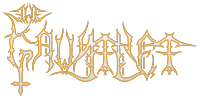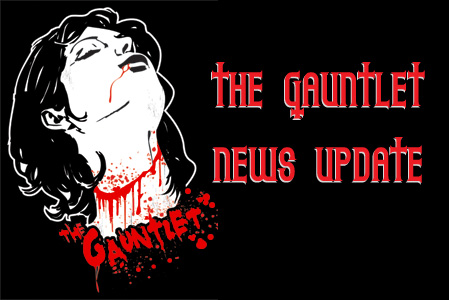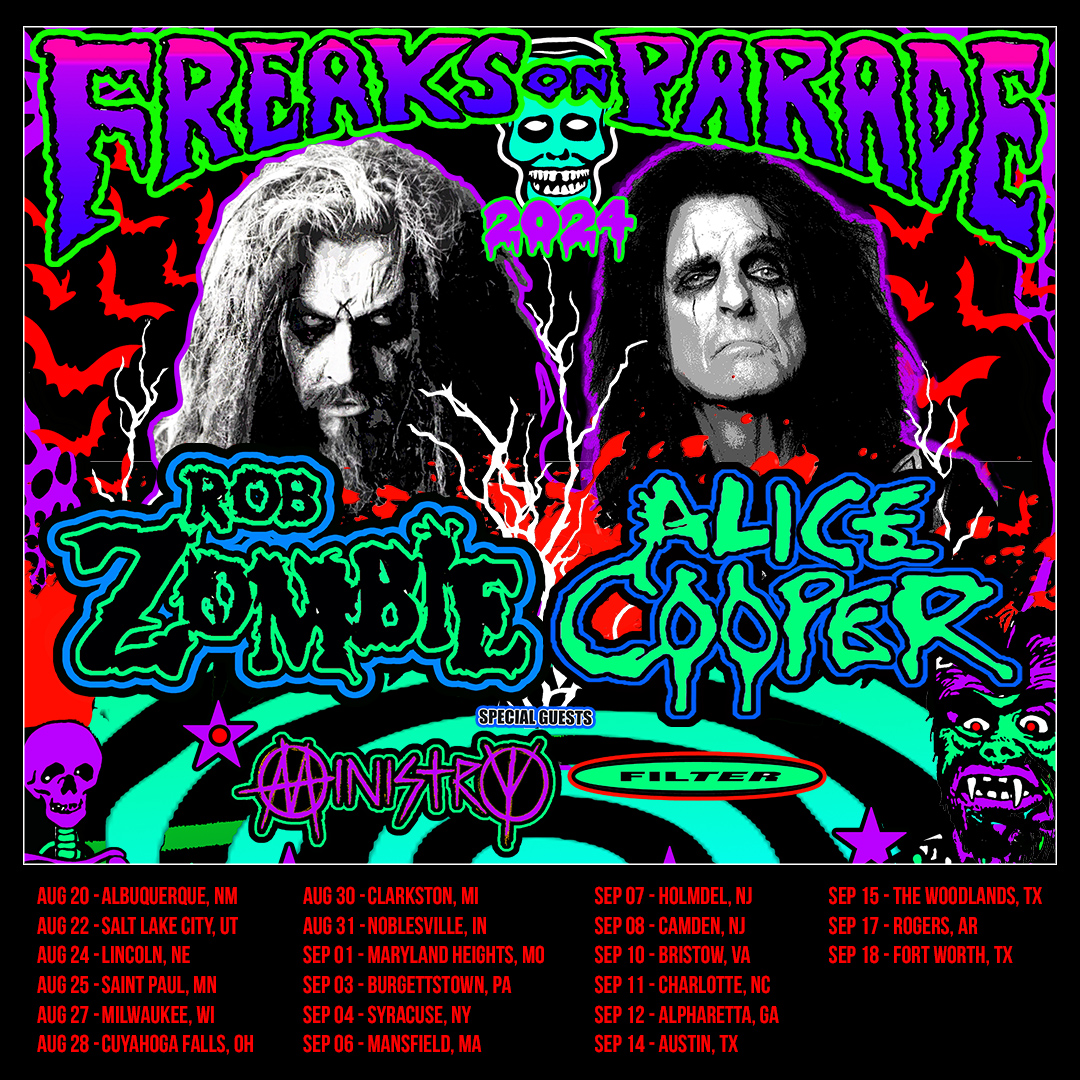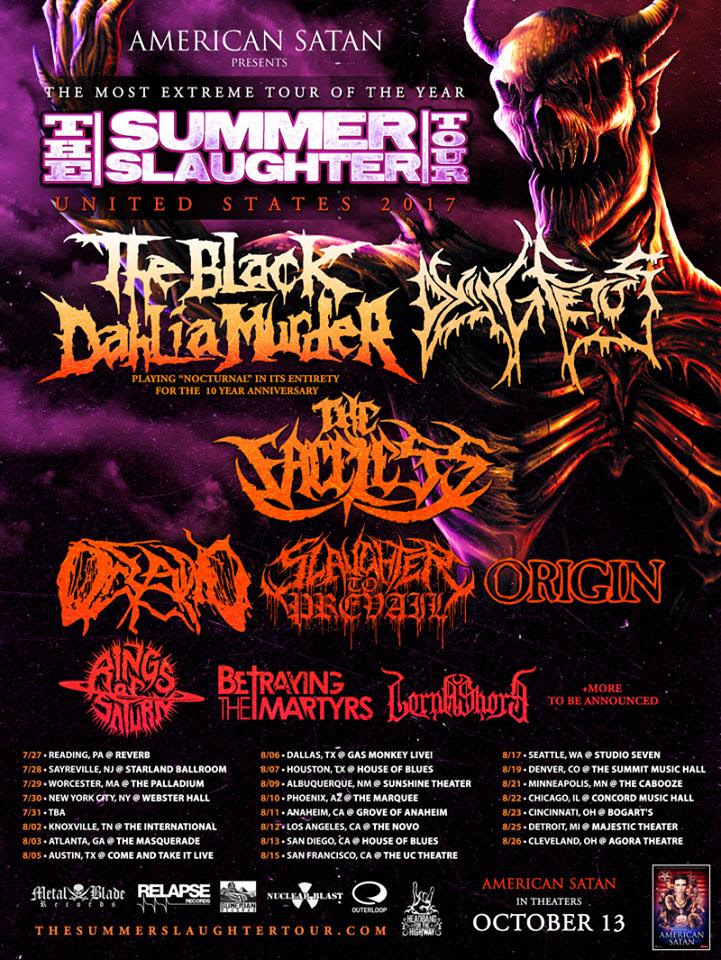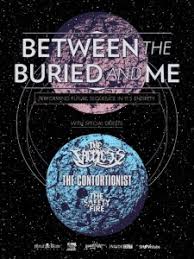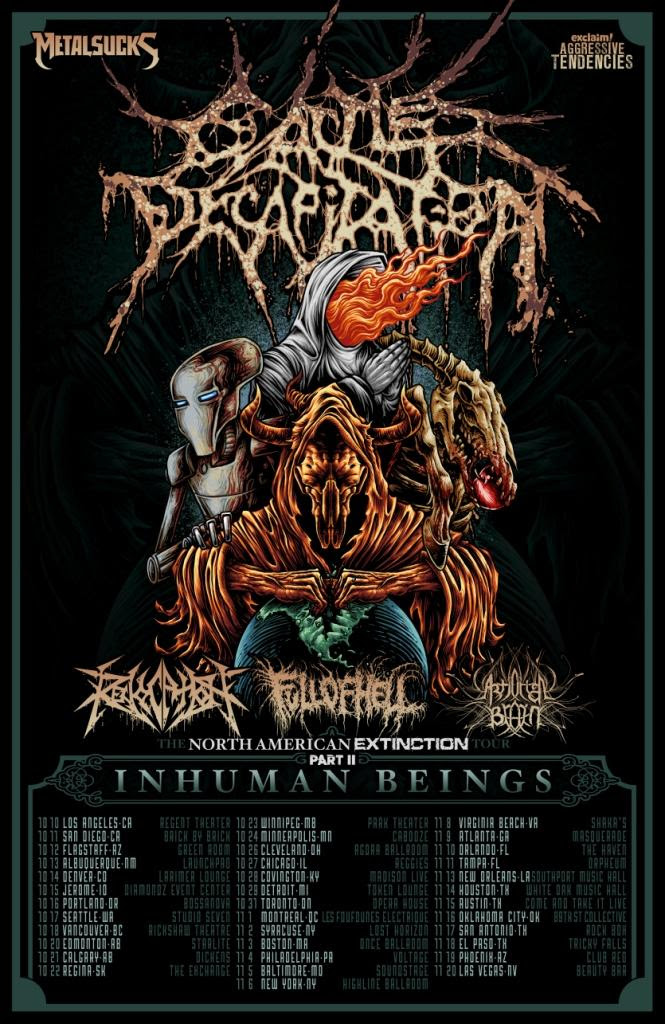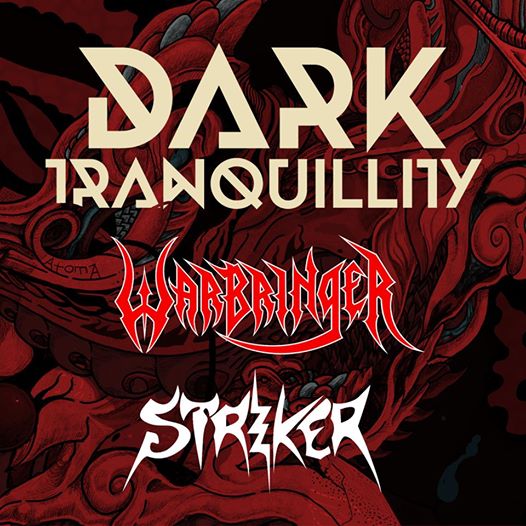SLIPKNOT's Shawn Crahan Discusses New Photo Book
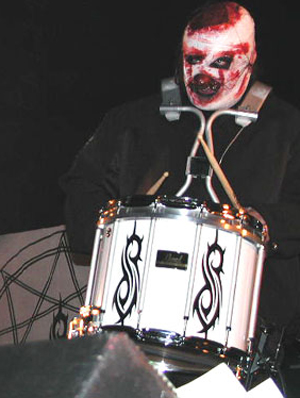 Step inside THE APOCALYPTIC NIGHTMARE JOURNEY…
Step inside THE APOCALYPTIC NIGHTMARE JOURNEY…From the mind of M. SHAWN CRAHAN, the founder and visionary behind one of the biggest hard rock bands in the world, the multi-platinum, Grammy-winning Slipknot--comes THE APOCALYPTIC NIGHTMARE JOURNEY. Set for release through MTV Books in late June (starting June 19), THE APOCALYPTIC NIGHTMARE JOURNEY is a large-format art book collection of explorations in darkness and light from SHAWN’s experimental photography, his second and equally powerful artistic outlet which he has honed for over a decade. Weird, wired, paranoid, endlessly imaginative and cancerously prolific, he’s created thousands of dangerous representations of reality through eye-gouging Polaroids in numerous artistic styles throughout this hand-picked collection of images.
CRAHAN will participate in a panel at SXSW Music Festival this week. He'll join Mike IX Williams (Eyehategod/Arson Anthem), Orion Landau (Art director for Relapse Records) on Thursday, March 15 (2:45 PM, Austin Convention Center, Room 11AB) for the "Seeing Red Aesthetics & Visuals of Metal" panel to discuss the progession of art and visual themes in the hard rock and metal genre. Later that evening, CRAHAN will host THE APOCALYPTIC NIGHTMARE JOURNEY book preview, Q&A and SXSW party (7:00 PM, The Jr. formerly Emo's Jr., 603 Red River St., RSVP below).
Lars Ulrich of Metallica wrote the forward for the THE APOCALYPTIC NIGHTMARE JOURNEY. Below is an excerpt:
“Throw yourself into clown’s world, throw yourself into clown’s book, throw yourself into clown’s images, throw yourself into the whole fucking thing. Let go of the bungee cord, do away with the safety net. Just go for it, and let the journey take you wherever the journey’s going to take you. And as you’re going on that trip through this book, occasionally imagine clown next to you. Imagine hearing his voice in your head talking about what these images and experiences have meant to him and where he was going with it. And you will end up on one fuck of a ride, that I can guarantee you will be unique, spellbinding, and potentially life altering. This book is everything that art should be.”
Visionary and percussionist M. SHAWN CRAHAN has long been the creative and imaginative force behind the renowned Grammy-winning, multi-platinum group’s haunting and grotesque imagery. CRAHAN has art directed and photographed both album artwork and helmed numerous documentaries on the group. CRAHAN co-directed all of Slipknot's music videos and was the primary director for the band's acclaimed short film for "Snuff" from their fourth album All Hope Is Gone in 2009. The 6-minute noir video for “Snuff” features legendary actor Malcolm McDowell (A Clockwork Orange) in the enigmatic clip which has garnered over 14 million views on YouTube. Slipknot now has over 11 Million Facebook fans eagerly waiting to devour their art, music, videos, written word and vision.
Here’s a brief Q&A with SHAWN:
What photographers and visual art inspire you?
The American photographer Joel-Peter Witkin is my biggest influence in life. He is the be-all-end-all of everything I hope to become in photography. I have to study the masters of the realm before I’ll ever get to that level. The Impressionist painters have also made an indelible mark on my work as well as the Surrealist and Post-Impressionist styles. I love Henri de Toulouse-Lautrec and Cezanne and Gauguin, all the masters of painting. But Joel-Peter Witkin is the end all be all in photography. I would never copy Joel, but I desire the confidence to able to create unheard of visions within my soul and not worry about the risk of society or cultural retaliation. He creates the most horrific, insane, almost heinous at times, sexual, human images of the grotesque. I would never do it for the shock factor only for the exploration of my mind, to somehow make sanity tangible by bordering on the edge. I’m all about making art tangible, taking it from my brain and having you hold it in your hands. And that’s what The Apocalyptic Nightmare Journey is, you’re holding my vision. That is as close to god as I come. It’s the same thing with my band Slipknot, when we’re on stage it’s church. It takes two to make church, but we have nine. It’s my religion.
Describe your muse…
We’re all trying to understand the myth of life. Uncovering the myth is understanding that the truth is always in front of you. Both my peers and mentors that have taught me from music to photography, have all agreed one of my most prominent attributes in art is that I know how to commit. I don’t spend a lot of time trying to wonder if something can be better, I commit and I know right away that if I’m happy with a piece and this is how it’s going to lie forever. The truth is in front of you, and you have a right decision and a wrong decision to make at all times. Being in a Catholic school for 12 years I’ve grappled with my own questions on with mortality and dying. I don’t have a morbid sense of fascination or even think that death is something I should study but it’s in everything I do because “death is more proof than god.” I’m more in touch with my own death clock than I am with god. I’m not religious, but I am spiritual and fairly dark hence the The Apocalyptic Nightmare Journey.
Describe your process as a photographer.
On The Apocalyptic Nightmare Journey, my emphasis is on medium format Polaroids. During our first cycle album in 1998, Rolling Stone sent a photographer to Des Moines, IA for a photo shoot of our masks. Being the arist guy in the band I gathered the masks together and met him. We got along and I became curious, so he let me position the masks so he let me positiion the masks and look through the camera's eye so I knew how the picture would feel. After seeing what I'd envisioned he became the photographer and snapped the photos. It was a medium format camera with a Polaroid back that he used for tests to make sure everything was perfect then he would switch to a film back. Not lnowing what the film would look like I became fixaed with the instant gratification of the Polaroids. It felt and looked exactly like what I'd seen through the camera's eye. The Polaroid is something completely original. They’re never perfect, since the pulling process leads to imperfections, so I became obsessed with the idea of creating something original. I convinced myself I wanted to get a master’s degree studying Polaroid. Once you snap the picture and pull the Polaroid, the two rollers squeeze out emollition, the chemicals that develop the film, and I got it down to where I knew every second what happened. I am able to rip the pictures in half, I’m pulling the pictures off, I’m turning it upside-down, pushing it hard, creating a double exposure, sliding it, making the chemicals slide like it’s constantly in movement, I created something completely new and original every time I shot a Polaroid. You can never re-create what just happened, you’d need 10,000 cameras and people with stopwatches and notebooks to study ever movement. Afterwards, even if you had that information you would still have to take in the circumstantial randomness of life; the heat, the sun, where the moon was, etc. and these kinds of things cannot be reproduced.
Tell us about your home life growing up and how you feel this shaped you as an artist.
I’m an only child and not unlike any other child, some complex things were going on at home. As a result, I spent a lot of time by myself and lived in my own imagination. As I isolated myself more and more single pictures and images came in my mind ending with nothingness, the void of color, black... I was young 4, 5, 6 years old, studying the absence of color in my own mind. I began to move towards color. Maybe looking for a little happiness, a little bit more understanding of the reality going on outside and seeing fall, winter, summer and spring colors. Also, I grew up on Dr. Seuss which brought me all the color, and all the words, and all the stories, and all the imagination I could have wished for. In particular there is this book, it’s called The Digging-Est Dog and I felt connected to it because the dog just kept digging for the bone I’ve always been digging for something in my life, dealing with isolation and Dr. Seuss brought me a lot of color and the rhymes and the on-going sentences and sometimes sentences that made no sense which made all the sense in world to me. I credit my mom for recognizing I was interested in visual art, in general. She bought me books on Van Gogh, Michelangelo, Rembrandt. I was fascinated with all the biblical and mythical metaphors between heaven and hell, the duality of good and evil and by the downfall of the human race, where humans get greedy and gluttony takes over. I remember paintings of voluptuous women being pulled down into the cracks of the earth into a fiery hell by goat demon characters, even as a young man it aroused me, in a way, that wasn’t exactly sexual but extremely thrilling. I was so young I just had to try and figure it out. I was affected by the masters and I was able to really look at these things and try to figure them all out myself at such a young age. And as I got older, I began to understand the human connection between what people think and feel and creating it on canvas, paper, poetry, etc. I was obsessed to the point where, my mother was called into my grade school because I was drawing pictures of naked women. I went to a catholic school and they thought it was inappropriate. My mom took one look at the first picture I drew and said to them “This is a picture of me. He’s my son and he’s seen me like this so it’s all he knows. He doesn’t have these ideas on his mind he is just drawing, he’s interested in the human form”. That was it, she went to town for me at my catholic school and really had to make them think differently about what’s was going on in my mind.
And that’s where it all started and it’s taken me from there till 2012. Art is a vision, a bigger picture, I follow my instincts and I go find it. It’s euphoric, like sex.
When did you start shooting and did you have any formal training? What is coming up next in the art world for you?
I started shooting as young kid. Now that I look back, I see that I took at a lot of photos of my Dad and Mom, who are now deceased. I was shooting them with an eye. I only would take a picture of my Dad when he was a certain way. I realize now that I had the eyes then, but I wasn’t aware of being a photographer. In High School I took Photography, but I didn’t have patience for the class, or enjoy the assignments. Once I learned the form and technique of the camera, I moved beyond being taugght since I am spontaneous. It wasn’t until I got on the road with Slipknot around 1998, that others such as the Rolling Stone photographer took note as my vision was developing. He said, “You’ve got the eye man, you’ve got the gift. You know what you want, you've just got to learn the camera.” That’s when I knew I had to focus on the craft. I had a mentor who I used to take out on the road, one day and the situation wasn’t his fault, but he just wasn’t getting what I wanted, I asked him if he would hand over the camera. He looked me dead in the eye and said, "Oh no, things are never going to be the same again." And sure enough, I haven’t stopped shooting seriously since. I give myself goals, I took pictures with the Medium Format Camera for years. Then finally I hid it away in my storage unit and bought a digital camera, to learn it and that’s what I am doing now. The Apocalyptic Nightmare Journey is a reflection on all of my Polaroid work up until this moment. My next book will be of models of beautiful women and the stories that we have of collaborating with each other and creating art.
Which image or overall theme from The Apocalyptic Nightmare Journey is your current favorite?
The photos that people allowed me to take when they were emotional and outside of themselves, in a moment, those are the pictures I’m most proud of. They trusted me enough to take a photograph. They gave their whole being to me without hiding. Overall, it took me 8 years to make this book. I’ve got over 5,000 Polaroids, I could have done all of them, but I held back and pulled the best of the best, which added up to 175, 200 photos in this first book. My goal is to take you through my life, in little portions of it, there’s members of my band with masks, without masks, with other humans that are big stars, or not stars, there’s my family, there’s segments of different areas that I studied, including animals and the goat that’s on Slipknot’s second album cover, Iowa. I held a lot back, but I’d rather give out a few select, profound images, that I love to introduce the world to my work.
What appealed to you about the SXSW panel “Seeing Red Aesthetics and the Visuals of Metal”?
It’s just insanity and an honor to go speak at SXSW again. I love it, I’ve done it before and I'm honored to be asked again. I’ve watched some of my friends do panels and I learned so much. I love that outlet, to be able to shed some of your knowledge and ideas as well as learn something new, all good teachers are good students, and all good students are good teachers. I go there to learn something from someone who is asking me a question that I may not be able to answer, and that might be the epiphany that drives me to the next level of evolution.
Read More News
Tags: Slipknot, Shawn Crahan
Jason Fisher March 14, 2012
